2024-02-23
Ultimate Guide to Artificial Turf Maintenance
The allure of a lush, green lawn without the constant upkeep of natural grass has made artificial grass popular for homeowners, businesses, and sports facilities. Unlike a natural grass lawn, which requires regular mowing, watering, and fertilizing, artificial turf offers a visually appealing and functional alternative with significantly less day-to-day maintenance. However, the maintenance of artificial grass is essential to retain its aesthetic appeal and longevity, underscoring the importance of a tailored care routine.
Artificial grass maintenance is not as labor-intensive as caring for a natural lawn but requires specific practices to keep it looking its best. Regular maintenance tasks such as removal of debris, stain cleaning, and proper drainage are crucial for preserving artificial turf’s lush appearance and feel. These practices help maintain artificial grass in pristine condition, ensuring it remains a durable and attractive landscape feature.
Despite its reputation for being low maintenance, artificial turf maintenance is crucial for preventing wear and tear, especially in high-traffic areas or pet-friendly spaces. This guide aims to demystify how to maintain artificial grass, offering practical tips and strategies to ensure your artificial turf remains as vibrant and inviting as a well-kept natural grass lawn. Artificial turf can offer a beautiful, hassle-free green space for years through proper care and maintenance.
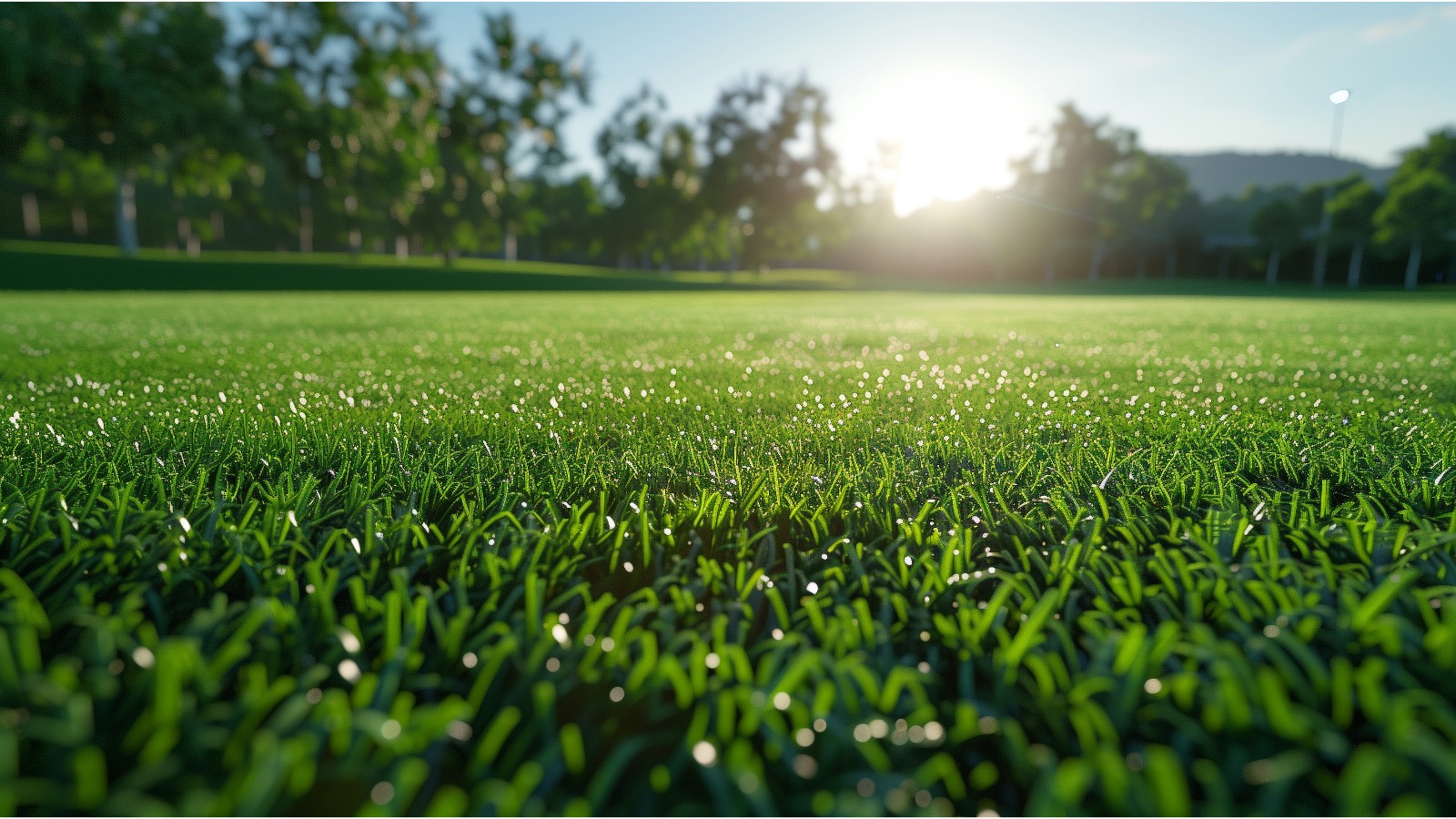
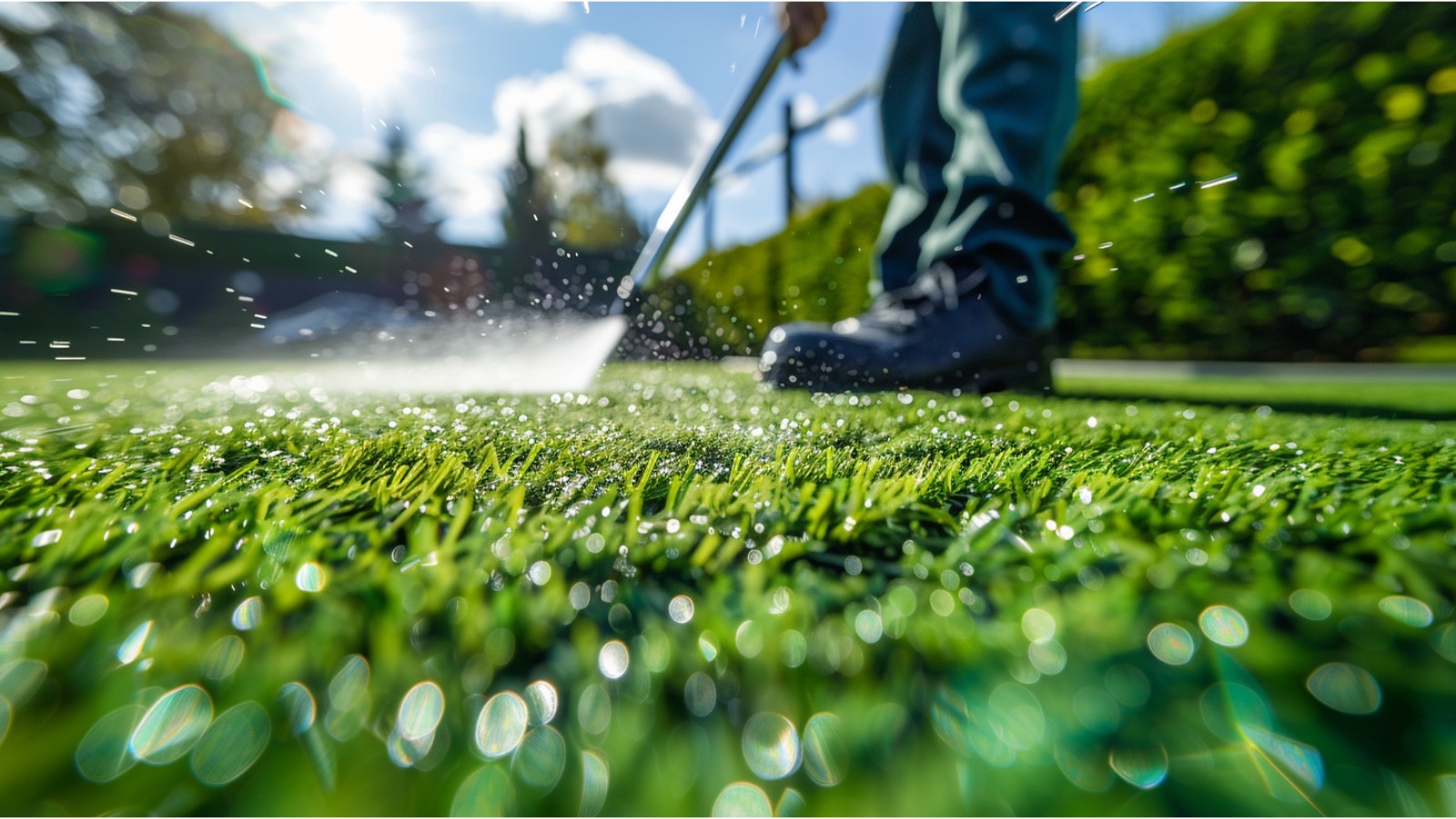
Regular Upkeep and Cleaning
Under regular upkeep and cleaning, ensuring your artificial turf’s longevity and aesthetic appeal involves a few key practices. These practices address your turf’s daily challenges, from general debris accumulation to the more specific needs arising from pet ownership or accidental spills. We can tackle each aspect with focused, effective strategies by segmenting these tasks into routine maintenance, cleaning spills and stains, and a dedicated guide for pet owners.
Routine maintenance forms the foundation of synthetic grass care, emphasizing debris removal and turf fibers’ upkeep to maintain a neat appearance. Following this, addressing spills and stains quickly and efficiently helps prevent permanent damage, keeping your turf looking new. For households with pets, special considerations are necessary to manage waste and maintain hygiene, ensuring that the artificial lawn remains a clean and pleasant space for everyone. These subsections provide a comprehensive overview of the necessary steps to maintain the beauty and functionality of your artificial grass.
Routine Maintenance
Routine maintenance is the cornerstone of keeping your artificial grass in prime condition. By staying on top of this, you ensure your synthetic lawn’s longevity and aesthetic appeal. Here’s a quick checklist to guide you through the essentials:
- Sweep regularly: Remove debris using a large natural bristle broom or leaf blower.
- Promptly remove waste: This is especially important for pet owners, as removing pet waste quickly prevents odors and staining.
- Inspect regularly: A quick inspection can help identify any issues early and address them promptly.
Adhering to these simple steps can significantly enhance the appearance and lifespan of your artificial turf lawn.
Cleaning Spills and Stains
Spills and stains on artificial turf are inevitable, but they don’t have to be permanent. Quick action and the right cleaning methods can effectively tackle the most common spills. For tougher stains, such as motor oil, specialized approaches may be necessary.
- Mild spills: Clean with hot, soapy water and a soft brush.
- Stubborn stains: Use mineral spirits or freeze them with dry ice before gently removing them.
- Pet-related spills: Wash away with a garden hose and use an environmentally friendly cleaner for deeper cleaning.
Cleaning your artificial turf properly helps maintain its appearance and prevents damage. Regular attention to spills and stains ensures your lawn remains a pristine and enjoyable space.
Pet Owners’ Guide
Artificial grass maintenance is slightly more involved for pet owners but still manageable. Ensuring your artificial lawn remains clean and odor-free requires regular attention to pet waste. Proper drainage is also essential to prevent water pooling and maintain hygiene.
- Solid waste: Remove promptly to avoid stains and odors.
- Pet Urine: Rinse off with a garden hose to dilute and wash away.
- Deep clean: Occasionally, use a mixture of water and eco-friendly cleaner for a thorough clean.
By adopting these simple practices, pet owners can enjoy the benefits of a low-maintenance artificial grass lawn without compromising cleanliness or aesthetics. This ensures a welcoming, hygienic space for both pets and people.
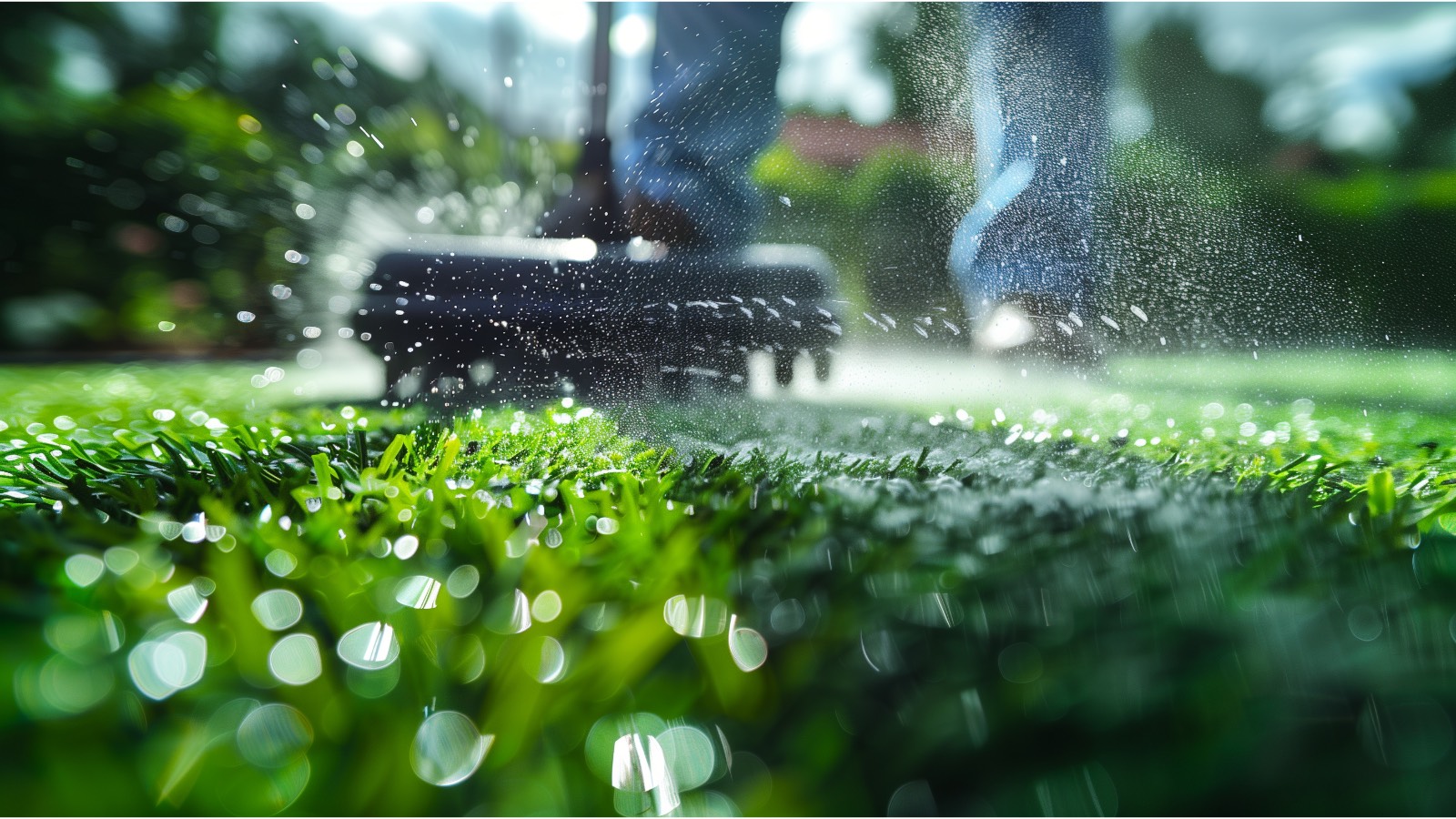
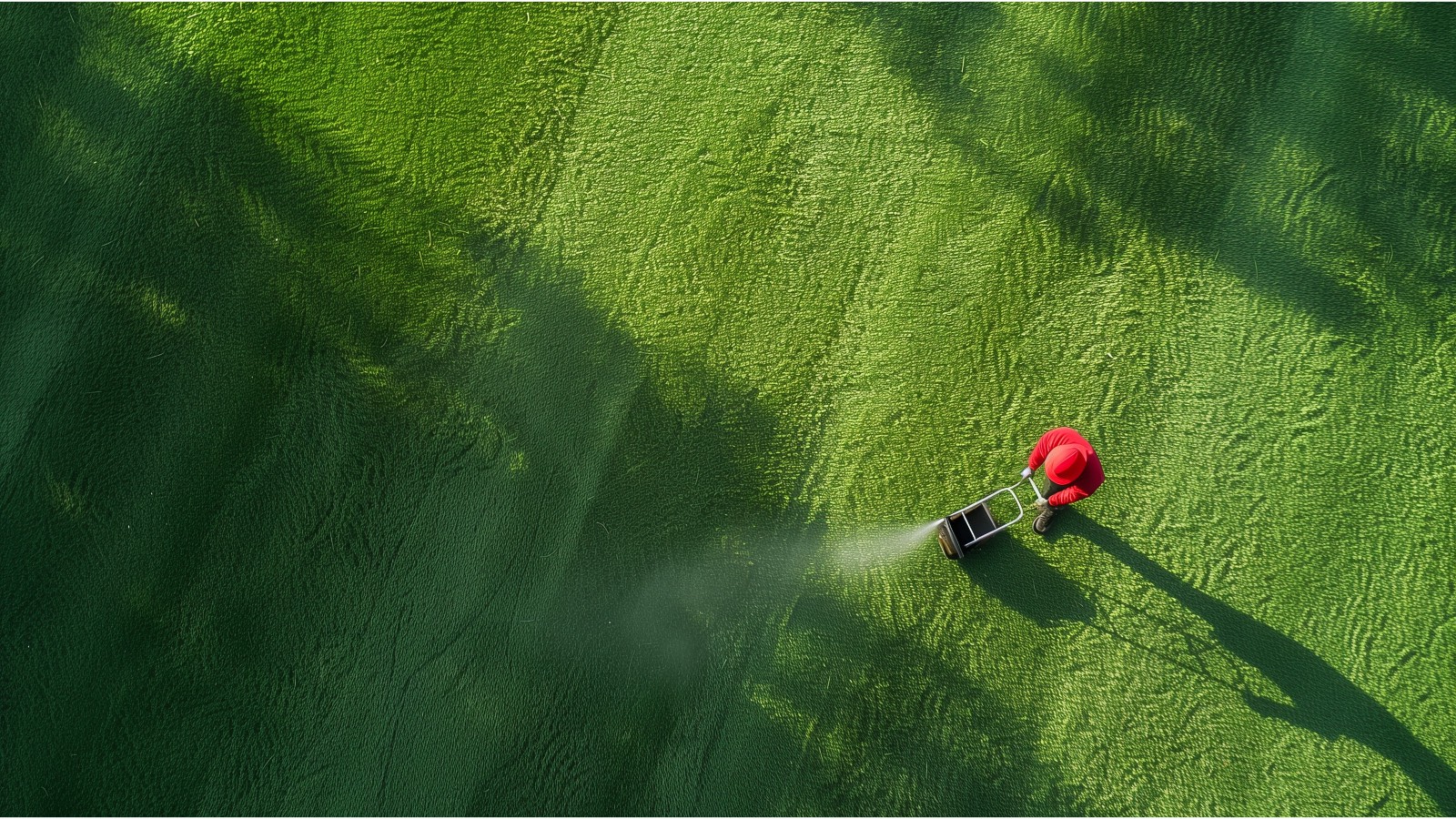
Special Care for High-Traffic Areas
Areas of your artificial grass lawn that receive heavy foot traffic need extra attention to prevent matting and keep the blades upright. Regularly brushing these areas with professional turf brushes in the opposite direction of the foot traffic can help maintain the turf’s natural appearance. Additionally, occasionally redistributing the infill material can help the turf recover from day-to-day wear and retain its cushioning properties.
Optimizing Artificial Turf for Sports Use
Artificial turf lawns are ideal for aesthetic landscaping and sports fields where durability and performance are crucial. The resilience of artificial turf stands up well to the rigors of sports, requiring specific maintenance to keep it in top condition. Here’s how to ensure your sports turf remains a high-performing surface:
- Regular brushing: Use professional turf brushes to keep the fibers upright and even, which is essential for consistent playing conditions.
- Infill maintenance: Regularly check and adjust the infill levels to maintain proper cushioning and support, reducing the risk of injuries.
- Hygiene: Sports activities can introduce more sweat and dirt. Schedule more frequent deep cleans to maintain a hygienic playing surface.
Incorporating these maintenance practices ensures that your artificial turf is visually appealing and provides a safe, durable surface for sports. Whether for soccer, football, or any other sport, properly maintained artificial turf can significantly enhance the playing experience.
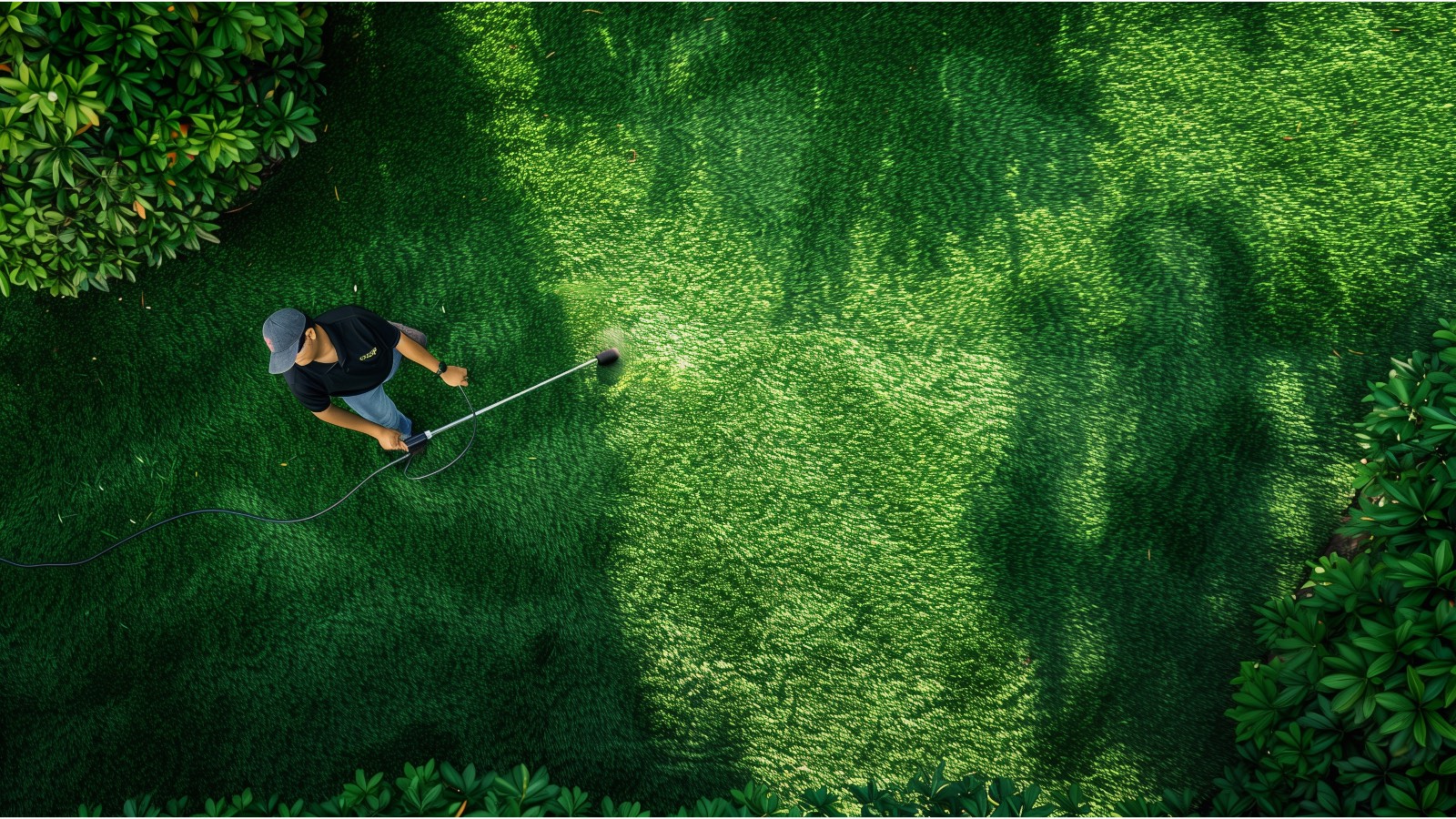
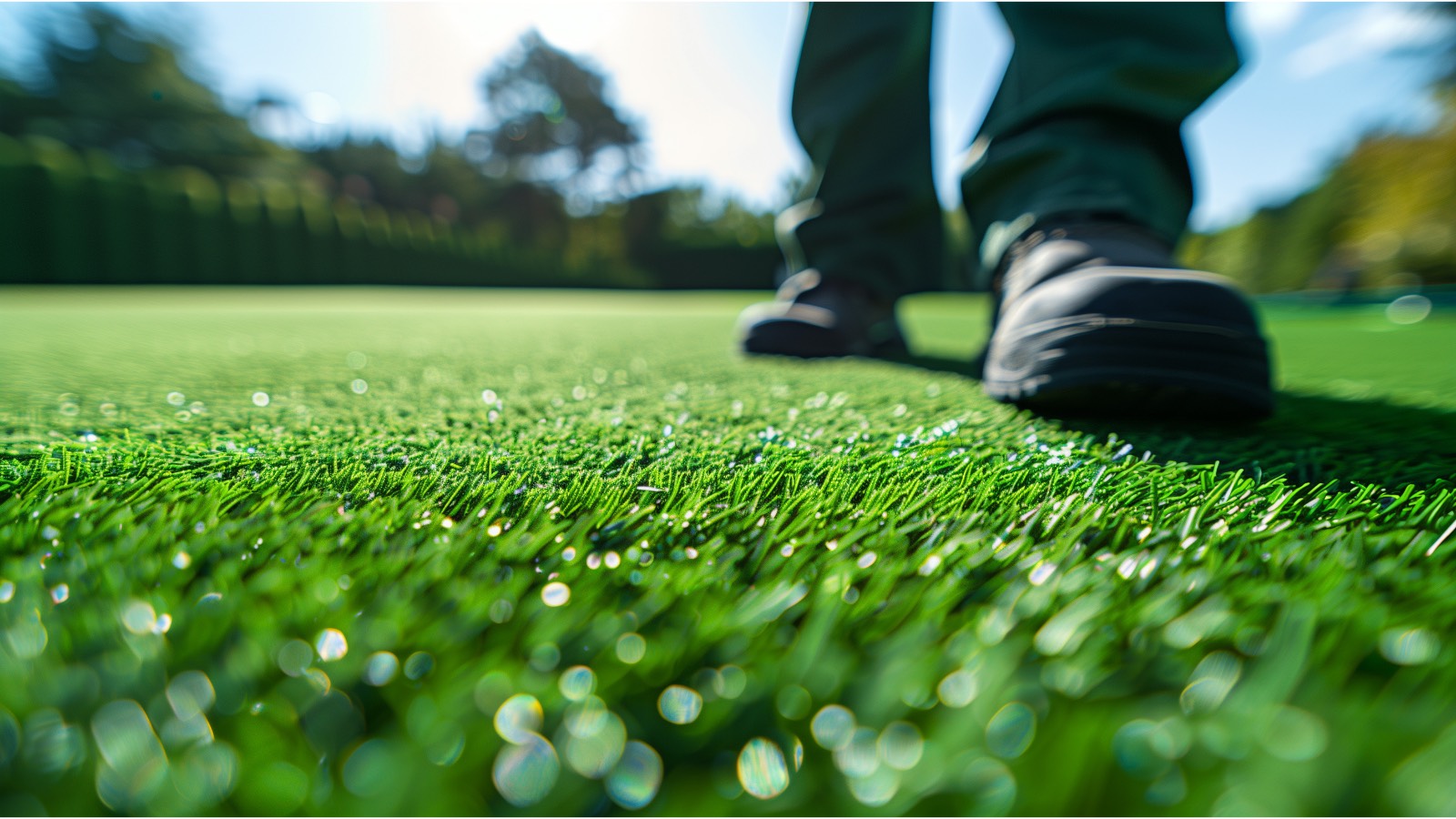
Seasonal Maintenance Tips
As the seasons change, so do the needs of your artificial grass, necessitating a shift in maintenance strategies to ensure your lawn remains in pristine condition year-round. Seasonal maintenance tips for artificial lawns are designed to address the unique challenges and opportunities of varying weather conditions. From the growth of natural life in spring and summer to the falling leaves and frost of autumn and winter, understanding how to adapt your care routine is key to preserving the beauty and functionality of your synthetic grass.
During the warmer months, spring and summer care focuses on refreshing your artificial turf after the dormancy of winter, preparing it for increased activity and ensuring it can withstand the heat. This involves thorough cleaning, perhaps with a leaf blower to remove any debris accumulated over winter, and checking for any needed repairs. Conversely, fall and winter upkeep revolves around preparing your artificial lawns for the colder months. Removing fallen leaves with a leaf blower, ensuring proper drainage before the frost sets in, and knowing how to handle snow and ice without damaging your synthetic grass are all critical components of seasonal maintenance that keep your turf in top condition no matter the weather.
Spring and Summer Care
As the weather warms up, your artificial grass lawn becomes the perfect backdrop for outdoor activities. To prepare for increased usage, perform a thorough spring cleaning by removing dust, pollen, and other allergens with a garden hose. This is also an excellent time to check for any minor repairs that may be needed.
Fall and Winter Upkeep
Removing fallen leaves and debris in the fall is crucial to prevent mold and mildew growth. Snow can be gently removed with a plastic shovel or broom as winter approaches. However, avoid using metal tools as they can damage the synthetic fibers. If ice forms, allow it to melt naturally instead of applying harsh chemicals that can degrade the turf material.
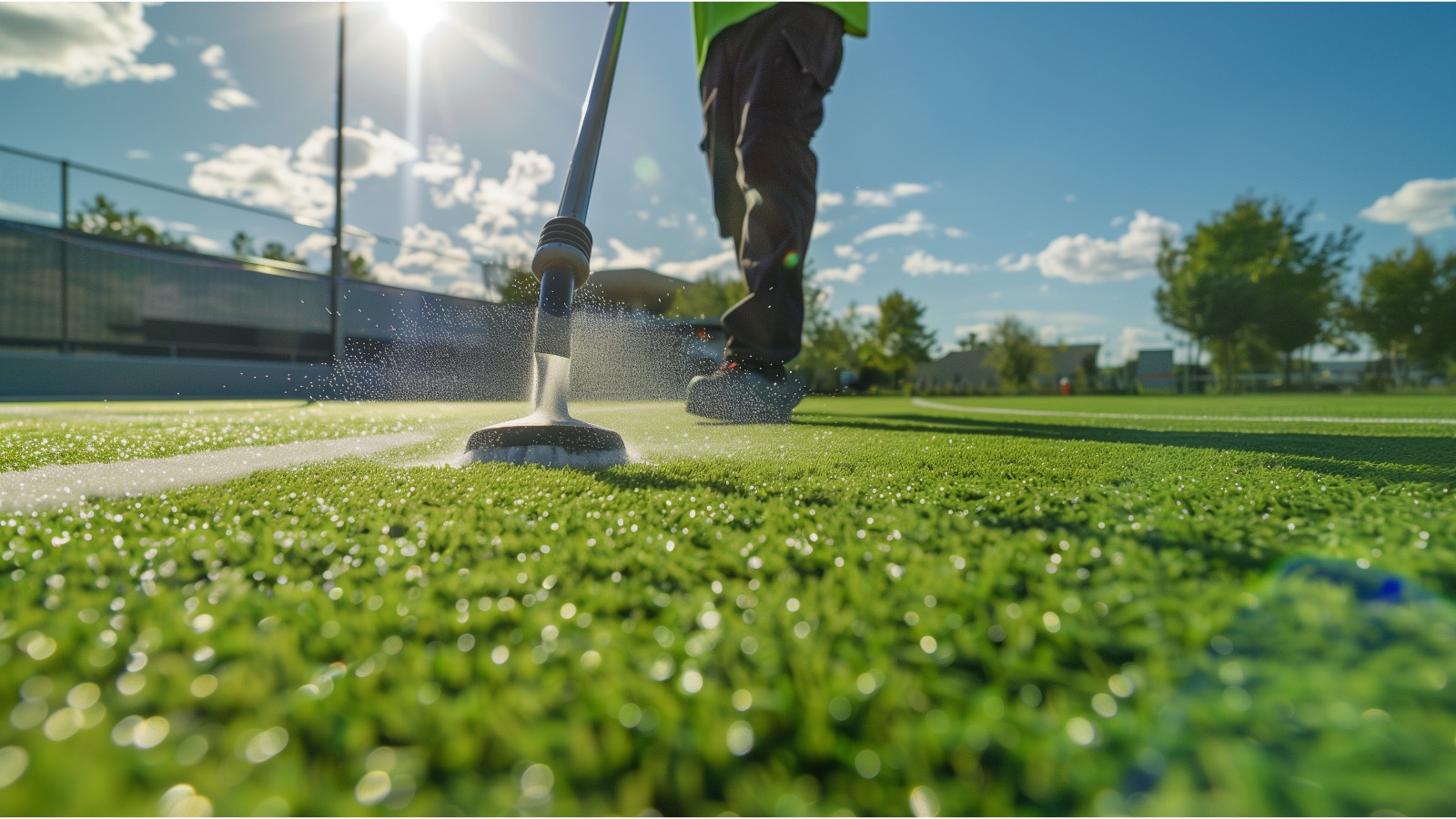

A Lasting Beauty
The journey to maintaining a pristine artificial turf landscape is one of diligence and regular care rather than the intensive labor required by a natural grass lawn. While markedly less demanding, the maintenance of a synthetic lawn calls for a consistent approach to cleaning, monitoring, and preventative measures. This ensures that the vibrant greenery and soft texture that mimic the natural lawn’s allure are preserved, enhancing outdoor spaces with their enduring beauty.
Artificial grass maintenance is not a cumbersome task; it is a series of simple yet effective steps designed to extend the life and appearance of your synthetic turf. From routine cleaning to addressing spills and managing foot traffic, the practices outlined in this guide are intended to help owners easily maintain artificial grass. Adopting a regular maintenance routine allows homeowners to enjoy the lush aesthetic and functional benefits of artificial turf without the constant upkeep associated with natural lawns.
Ultimately, artificial turf maintenance underscores the balance between enjoying a low-maintenance lawn and taking proactive steps to keep it looking its best. As we’ve explored, the efforts to maintain artificial grass are minimal compared to the exhaustive requirements of a natural grass lawn, offering a compelling alternative for those seeking a beautiful, durable outdoor space. By adhering to the guidelines for artificial grass maintenance, you can ensure your turf remains a vibrant, welcoming property feature for years to come, embodying the perfect synthesis of convenience and natural beauty.










